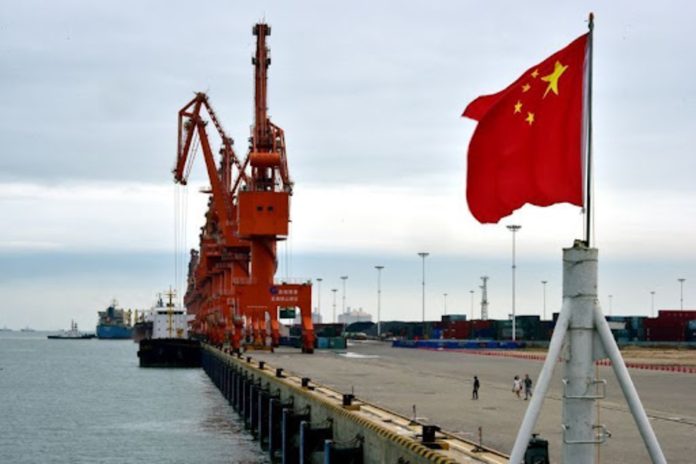China has speeded up the construction of the long-stalled Kyaukphyu deep-sea port on the western coast of Myanmar.
This port is a part of the Chinese policy, designed to encircle India with a string of ports in the neighbourhood, that can be later converted into military facilities capable of holding expeditionary forces and supporting ships and submarines.
This include Pakistan’s Gwadar and Sri Lanka’s Hambantota ports.
The location of the Kyaukphyu Port poses a direct threat to India’s eastern coast, especially considering its proximity to the key under-construction Indian naval base — INS Varsha. This base, vital for India’s defence, is intended for housing nuclear attack (SSNs) and ballistic missile submarines (SSBNs), allowing them to evade detection and operate clandestinely.
India is likely to have only a small number of SSBNs over the next two decades. If China is able to monitor the movement of these boats, it would be better placed to neutralise the sea leg of India’s nuclear triad in the event of war.
Given that the only Submarine Launch Ballistic Missile that is currently operational, the K-15, has a range of just 700 km, Indian SLBMs currently in service can hit targets in China only from a small part of the Bay of Bengal, making it easier for China to track their movement and take them out.
This is why the new Chinese port in Myanmar is causing concerns in India.
Adding to this is the port’s closeness to Abdul Kalam Island, used by the DRDO for testing of missile, including those meant for hitting targets on the Chinese mainland in the event of a nuclear exchange.
The proximity could allow China to monitor Indian missile tests.
There are other concerns too.
China’s influence in the region could extend beyond surveillance. The proximity of Kyaukphyu to India’s northeastern states raises the specter of China supporting insurgent activities, potentially forcing India to divert resources from other critical areas like the Line of Actual Control (LAC).
China’s historical support for insurgency, including drug and weapons trafficking in the North East, exacerbates these concerns.
The situation is further complicated by the ties between regional insurgent groups. The Arakan Army in Myanmar, believed to be linked to Kachin Independence Army (KIA) which is considered a surrogate of China, has already targeted Indian interests in Myanmar, like the Kaladan Multimodal Project.
China’s urgency in operationalising the Kyaukphyu Port is also driven by its dependency on the Indian Ocean for trade and energy supplies.
About 80 per cent of Chinese crude oil and 60 per cent of its trade pass through the maritime chokepoints of the Indian Ocean — the Malacca, Sunda, and Lombok straits.
In the event of war, India, in collaboration with its QUAD allies — the United States, Australia, and Japan — could intercept this traffic and deprive China of its crucial supplies.
This strategic vulnerability was highlighted when India demonstrated its long-range strike capabilities by launching a BrahMos missile from a Sukhoi Su-30 MKI, which flew close to 1,500 kilometres from an air base in India’s south, underscoring the chokepoints’ significance in maritime strategy.
These maritime chokepoints also serve as an Achilles heel for the Chinese nuclear submarines that China hopes to one day operate in the Indian Ocean Region (IOR). The regular hydrographic survey missions that the Chinese are mounting in the IOR are a clear indication in that regard.
The Kyaukphyu Port is seen as a bypass to these chokepoints, vital for China’s trade and military ambitions.
The Indian government is aware of this and is taking measures to nullify these developments. This includes installing coastal radars to monitor maritime traffic and setting up the Information Management and Analysis Centre (IMAC) at Gurugram for collating and tracking all maritime activities in the region.
To date, 46 radars have been installed along India’s coastline, with 38 more under construction. Furthermore, 32 radars are operational in various Indian Ocean nations like the Maldives, Mauritius, Sri Lanka, and Seychelles, with an additional 20 under construction in Bangladesh, fortifying its maritime surveillance capabilities.


